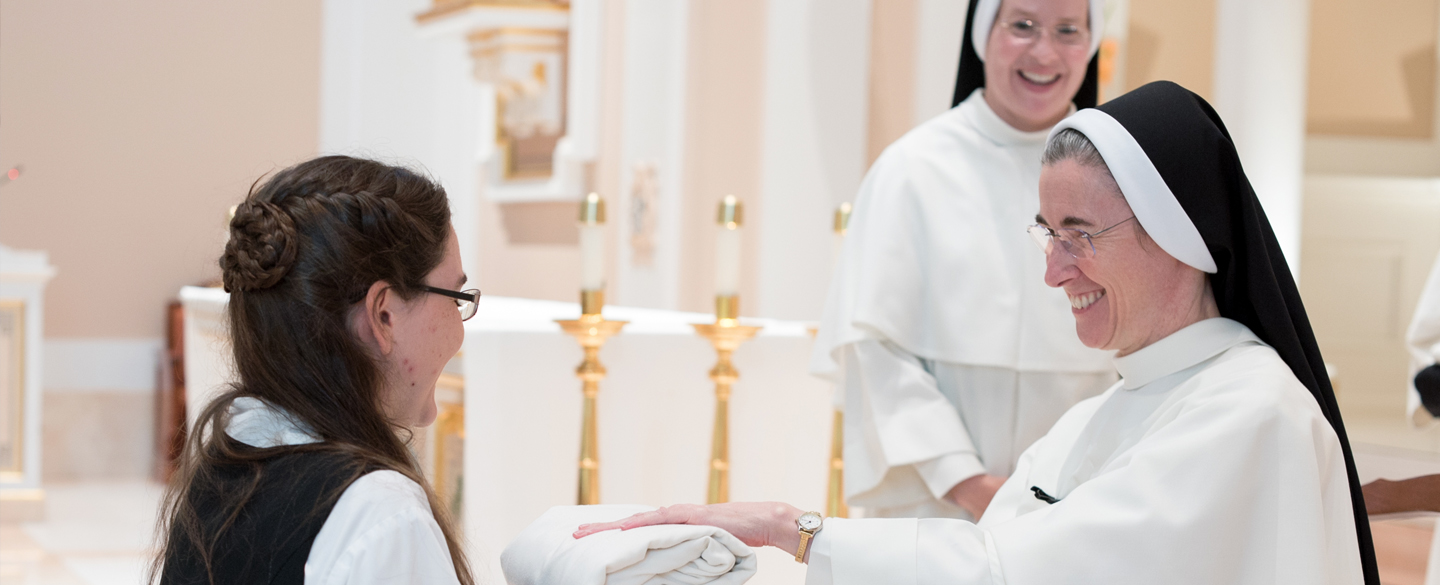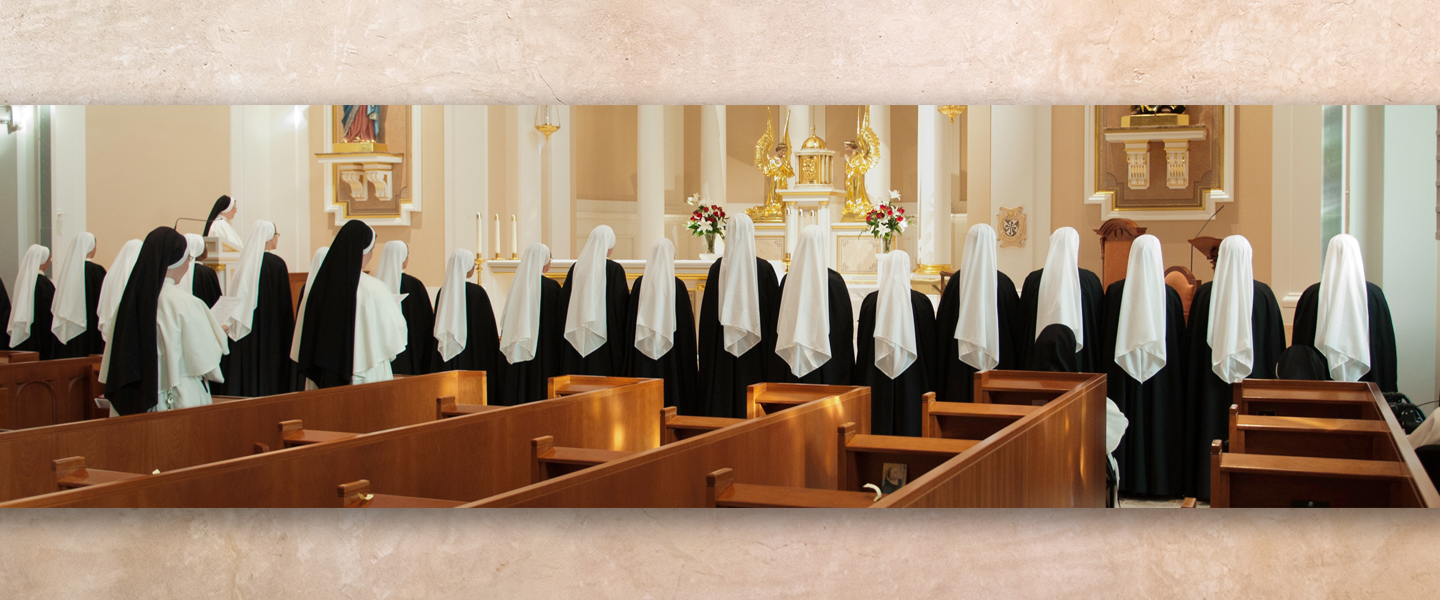
My religious habit is an indelible sign of an inward consecration and makes of me a public witness, to all the world, of values transcending time. (Mother Marie William MacGregor, Prioress General, 1964-1976)
The black and white habit of the Order of Preachers joins us in a moment’s glance to over eight centuries of Dominican history. From the foundation of the Order, the simple tunic and long white scapular, have served as a sign of simplicity, poverty, and most importantly, of consecration to Christ. For St. Cecilia Dominicans, the symbolism is the same. Perfectae Caritatis, the Vatican II document on the renewal of religious life, explains, “The religious habit, a symbol of consecration, [is to be] simple and modest, at once poor and becoming.” Our religious habit is an outward manifestation of an interior, spiritual reality: that of being a Bride of Christ. Clothed in a long white habit and black veil, we become by our very presence, witnesses to the captivating love of Christ. We become “a particularly profound expression of the Church as Bride who…stands before Him ‘in splendor, without spot or wrinkle or any such thing, that she might be holy and without blemish’ (Ephesians 5:17). This testimony is not only meant to be a sign for those we encounter, but also a personal reminder of who we are called to be. “I am the handmaid of the Lord” (Luke 1:38).
While the habit identifies us as belonging to Christ and links us to the broader Dominican family, it unites us in a particular way to St. Cecilia Congregation. The reception of the habit marks a sister’s formal entrance into the community. On the day of our reception to the holy habit of St. Dominic, each sister kneels before the Prioress General in the midst of the entire community and voices her desire: “…the mercy of God and yours and to be received to the holy habit of St. Dominic.” Mother addresses the new novice by her religious name for the first time and then places the habit, piece by piece, into her open hands. Giving the pieces of the habit, Mother offers a simple reminder of the symbolism associated with each. “Receive this tunic, emblem of innocence… Receive this scapular, Mary’s maternal pledge of protection… Receive this veil, a sign of humility… Receive this rosary, emblem of prayer by which your soul is united to God…” Now clothed in the habit, we are marked as Christ’s brides and as members the Dominican family.
From that day forward we clothe ourselves in our Dominican habit as we pray to be clothed in Christ. In the solitude of our cells, we pray with one heart the traditional prayers associated with each piece of the habit. We pray first the words of the bride: “Clothe me, O Lord, in the nuptial robe of charity…” We pray also for the virtues of purity and obedience, the grace to carry the cross, and for the protection of our Blessed Mother and St. Dominic. And thus as we go through the day, the habit calls us back to the spirit of prayer and to the life of virtue, grace, and charity for which we prayed that morning.
To wear the habit of the Order of Preachers is a great privilege and source of joy. From the beginnings of the Order, the simple black and white garments, symbolic of innocence and penance, have united individuals to the great family of St. Dominic and placed them recognizably within its rich heritage. For St. Dominic and the early brethren, the habit spoke of the simplicity of life and poverty of spirit so fundamental to true Christian living and opened the hearts of those separated from the Church to the beauty of truth. More than eight hundred years later, the habit remains an indelible sign of our religious consecration and expresses the invisible reality of the destiny of every Christian soul: we are called to belong to Christ.


 Back
Back